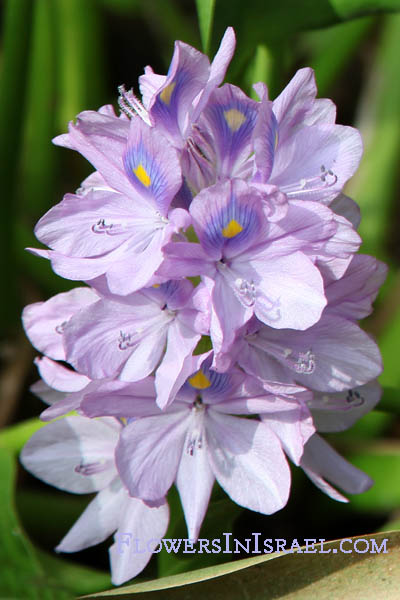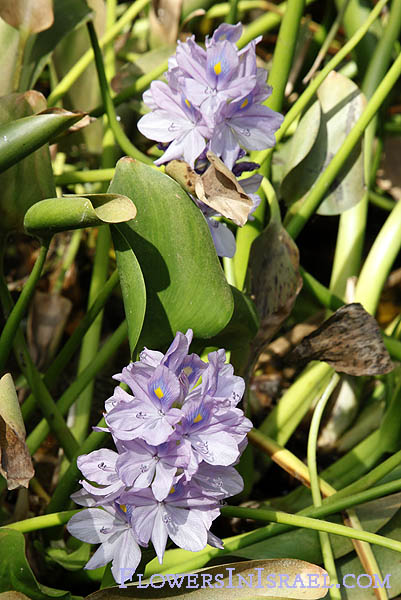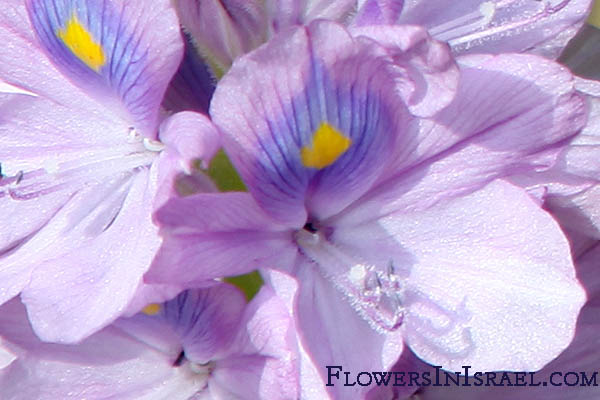Eichhornia speciosa, Common Water Hyacinth,
Hebrew: יקינטון המים ,איכהורניה עבת-רגל, Arabic: Ward en-nil
| Scientific name: | Eichhornia crassipes (Mart.) Solms | |
| Synonym name: | Piaropus crassipes (Mart.) Solms, Eichhornia speciosa (Mart.) Solms | |
| Common name: | Common Water Hyacinth | |
| Hebrew name: | איכהורניה עבת-רגל, יקינטון המים | |
| Arabic name: | Ward en-nil | |
| Family: | Pontederiaceae, pickerelweed family, פונטדריים |

|
| Life form: | Helophyte, a perennial herb, reproducing from stolons and by seed | |
| Stems: | Flowering stems erect, bending over after flowering, to 25 cm, distal internode less than 4 cm | |
| Leaves: | Alternate, entire, smooth, glabrous, glossy; petioles (leaf stems) floating, creeping, inflated, bulbous, spongy, to 25 cm long | |
| Inflorescence: | Spikes 4–15-flowered; spike at top of erect thick stalk to 25 cm long, rising above the leaves | |
| Flowers: | Hermaphrodite only; perianth, violet, light blue; stamens 6; ovary 3-celled | |
| Fruits / pods: | Capsule, 3-celled, containing up to 300 seeds; seeds ribbed, formed in submerged, withered flower; fruit and seeds are rarely observed | |
| Flowering Period: | Summer | |
| Habitat: | Humid habitats | |
| Distribution: | Invasive in water bodies | |
| Chorotype: | Tropical |

Derivation of the botanical name: Eichhornia, named for J.A.Eichhorn (1779 - 1856), a Prussian Minister of Education in the 19th century. crassipes, Latin crassus, thick; pes, a foot, and alludes to the swollen leaf stalk. Pontederiaceae, named for Giulio Pontedera (1688–1757) an Italian botanist, professor of botany at Padua, and director of the botanical garden there. Water Hyacinth refers to the plant's aquatic habitat and the similarity of the flower colour to that of the garden hyacinth.

|